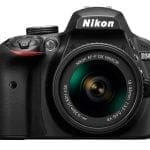Is the Nikon D3400 better than the D3300?
Now that Nikon has announced its new entry-level DSLR camera, the question you’re probably asking yourself is: is the Nikon D3400 better than the D3300?
The answer is, yes, but there’s more nuance to that. The better question is: should you upgrade from the Nikon D3300 to the D3400? This depends on your budget and what you value as a photographer, and below we’ll run through some of the key points…
What are the differences between the Nikon D3400 and D3300?
The launch of the Nikon D3400 comes more than three-and-a-half years after the Nikon D3300 was unveiled – which is a lifetime in camera technology – but the Nikon D3400 bears a strikingly similar spec sheet to its predecessor.
What’s the same? Well… nearly everything. Both the Nikon D3400 and D3300 share the same
- 24.2-megapixel sensor
- Expeed 4 processing engine
- Contrast detection AF system
- 11 AF points with 1 cross type point
- 5fps burst shooting
- 3in LCD screen on the back with 921K dot resolution
That may strike you as a lot of similarities for a new camera and a model that’s pushing four years old. But there’s something to remember: the Nikon D3300 was a strikingly good camera for its time and remains to this day perhaps the best camera for beginners on the market.
SEE MORE: Best cameras for beginners 2016
Also, the D3300 has been one of the best-selling cameras. So while Nikon may have taken three-and-a-half years to update it, the company has had the luxury of waiting for others to catch up to it. And while this update may seem modest, one could argue… why reinvent the wheel when you can refine it.
So what are the key differences between the Nikon D3400 and the D3300? The first is in body weight. The Nikon D3400 clocks in at 395g compared to the D3300’s 410g – a very slight difference.
Nikon has also boosted the native ISO range from 100-12,800 (expandable to 25,600) on the D3300 to ISO 100-25,600 on the D3400. That probably means that the results at the uppermost setting are a little better.
And lastly – but most importantly – the Nikon D3400 incorporates Nikon’s SnapBridge functionality.
For many, this will be the most significant new feature of the Nikon D3400 and it illustrates Nikon’s clever tactic of drip-feeding advanced technology from its professional-level cameras into its lower rungs.
Nikon’s SnapBridge technology, first introduced in the Nikon D500, enables the Nikon D3400 to be connected wirelessly to a smartphone or tablet for image transfer.
It maintains a low-power Bluetooth connection between the camera and the phone to enable images to be transferred automatically without the need to reconnect, even if the camera is turned off.
Sounds fantastic, doesn’t it? And it is! We loved it on the Nikon D500. However, because the Nikon D3400 doesn’t support Wi-Fi, the following SnapBridge features are not available: remote photography with a smart device, still image transfer in original size and movie transfer. In other words, you can only transfer smaller sized images, but that makes sense for sharing via a ‘phone.
So should you upgrade to the Nikon D3400, or should you buy it instead of the Nikon D3300? These are the important questions, and we have two different answers.
If you currently own a Nikon D3300 the cameras are so similar we wouldn’t suggest you upgrade to the D3400. Rather, we’d suggest you look at the Nikon D5500, or something like the D7200 which might feel a little advanced at first but will offer you plenty of spec at a reasonable cost and a lot of room to grow as a photographer.
If you are a photography newbie and looking to purchase your first ‘proper’ camera, then, yes, we would recommend you buy the Nikon D3400 over the D3300.
And an innovative feature like SnapBridge is only going to increase in usefulness as the world becomes more connected.



